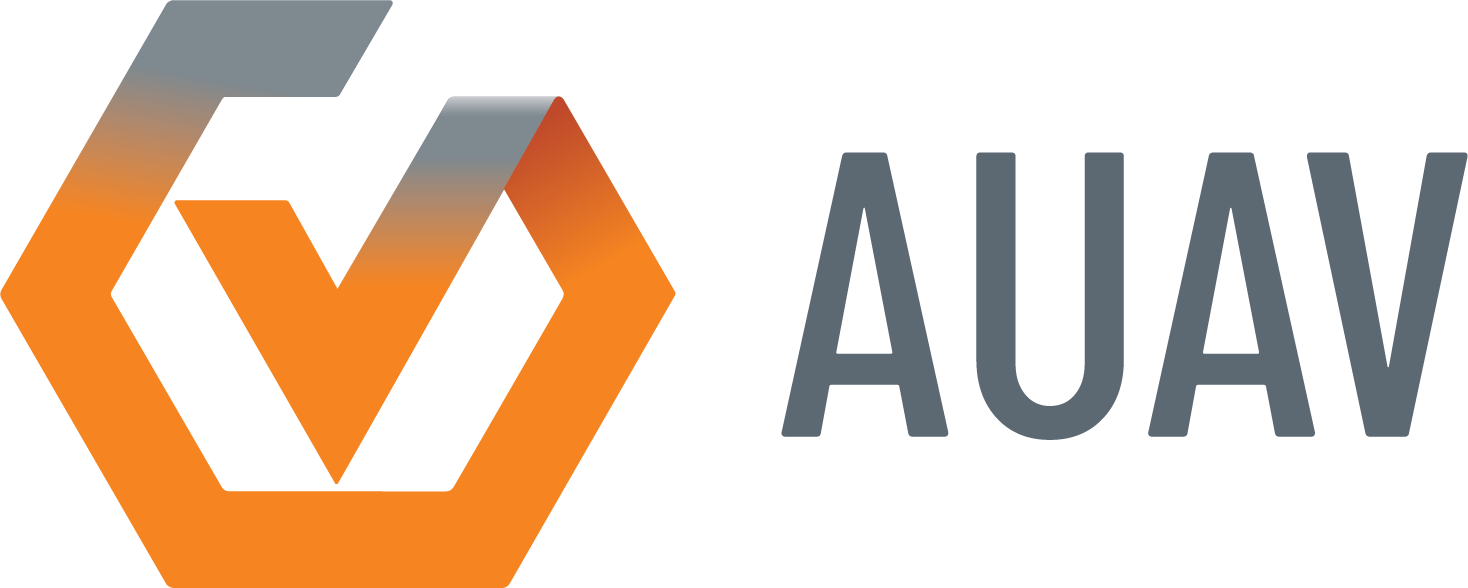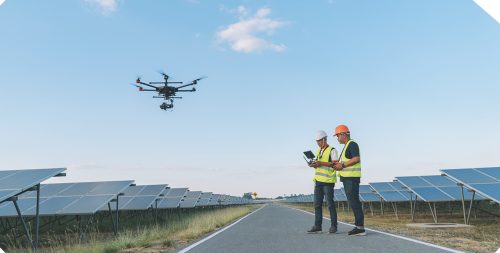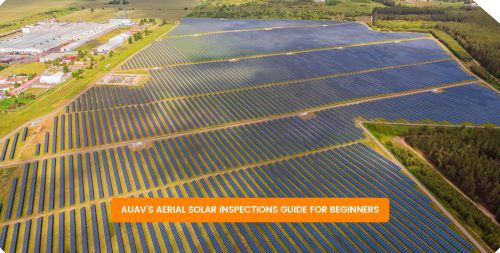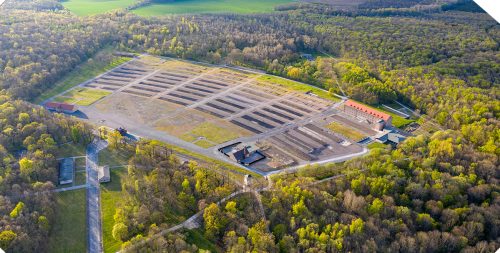Some of the dramatically thriving industries also include the solar energy sector. With numerous applied areas getting unlocked with the growth of this sector, there’s also a critical need to ensure efficiency in both maintenance and inspection protocols. As we navigate the year 2025, it’s drone technology that will experience immense transformation. It has revolutionized how we’ve been approaching solar panel inspections. With drone technology offering impeccable, solar farm projects are now also expected to enjoy its key offering, i.e., cost-effectiveness.
Let’s go ahead to explore the revolutionary impact of unmanned aerial vehicles on the future of solar farm maintenance. AUAV provides top insights into drone solar panel inspection in 2025.
Why Choose Drones for Solar Panel Inspection in 2025?
Conventional solar panel inspections that involve manual walkthroughs and scaffolding are rapidly becoming obsolete. Modern types of drones bring with them a set of benefits when compared with these traditional inspection methods.
Drones offer comprehensive coverage without any constraints in terms of physical accessibility. Different types of drones that are equipped with thermal imaging cameras are capable of detecting problems that are otherwise not visible to an ordinary human eye. This can effectively bring down the duration of inspection – from days to hours.
The integration of UAV types and AI-powered analytics has given a new dimension to the intepretation of data, allowing real-time fault detection. As a leading player in the tech revolution, AUAV has been providing specialised to clients. Our focus has always been on eliminating the need for expensive equipment rentals. We prioritise minimal safety risks that are typically involved in manual inspections.
More recently, the cara kerja drone systems are incorporating features like automated flight patterns and advanced GPS positioning, which ensure consistent and repeatable inspection protocols.
Ready to revolutionise your solar inspections?
Contact experts at AUAV today for cutting-edge drone solutions!
What Are the Top Benefits of Drone-Based Solar Panel Monitoring?
- Efficiency gains with single rotor and fixed wing drones allow coverage of vast solar farms quickly and thoroughly.
- Cost reductions of 40–60% vs. traditional inspections, with increased inspection frequency.
- Improved safety as drone operator jobs involve remote monitoring, eliminating height and terrain risks.
- How do drones work? They collect data from a safe distance while complying with Australian UAV regulations.
- High data quality with thermal and visual imagery from various types of unmanned aerial vehicles enables better maintenance, warranty support, and performance analysis.
What Are the Essential Drone Equipment for Solar Inspections?
- The type of drone must include thermal cameras detecting ≤0.1°C variations and RGB cameras with ≥20MP resolution.
- GPS systems ensure accurate issue location tagging on solar panels.
- Types of UAVs should include battery management systems for extended flights across large solar installations.
- Ground control stations with HD displays allow real-time issue detection and drone monitoring.
- Data storage and cloud-based processing are essential to handle large datasets for drone jobs, ensuring quick analysis and reporting.
Transform your inspection capabilities!
Talk to AUAV’s experts for professional-grade equipment!
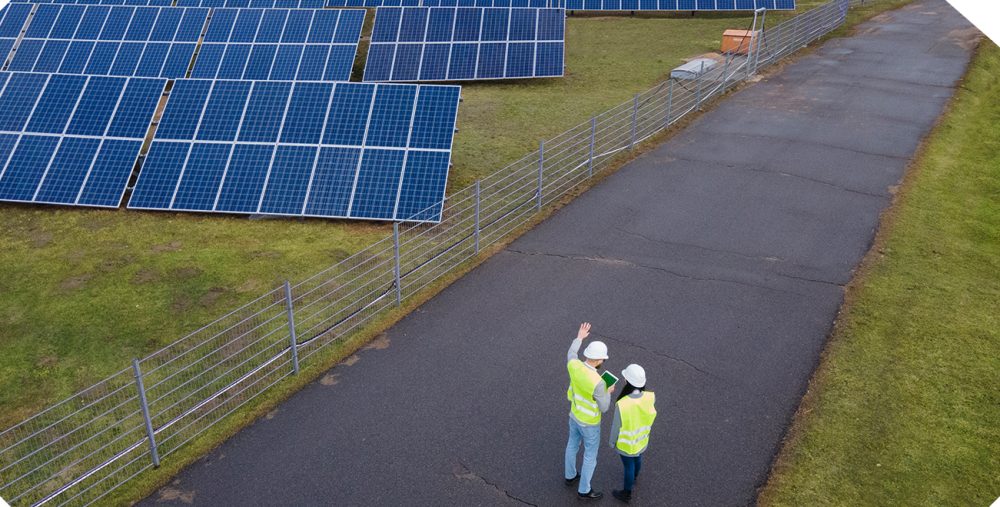
Step-by-Step Process of Conducting a Drone Solar Inspection
- Pre-flight planning begins with site assessment and weather evaluation.
- Operators analyse solar panel layouts, identify potential obstacles, and establish optimal flight patterns.
- The 21 types of drones available today offer various capabilities, requiring careful selection based on site-specific requirements and inspection objectives.
- Flight execution involves systematic coverage using predetermined waypoints and altitude settings.
- Thermal imaging captures are synchronized with visual documentation, ensuring comprehensive data collection.
- Real-time monitoring allows operators to adjust parameters based on environmental conditions and preliminary findings.
- Post-flight analysis utilises specialised software to process thermal and visual data.
- Automated detection algorithms identify potential issues, while manual review ensures accuracy and completeness.
- Detailed reports highlight critical findings, provide maintenance recommendations, and establish priority rankings for repair activities.
- Data integration with maintenance management systems enables seamless workflow integration and tracking of corrective actions.
Compliance and Safety Considerations in 2025
Regulatory compliance remains paramount for commercial drone pilot jobs in 2025. Australian authorities have streamlined certification processes while maintaining strict safety standards. Operators must maintain current licenses, insurance coverage, and operational documentation to ensure legal compliance.
Safety protocols encompass pre-flight equipment checks, weather monitoring, and emergency response procedures. The evolution of how do drones work has improved fail-safe mechanisms, including return-to-home functions and automatic landing capabilities during system failures.
Privacy considerations require careful attention to the neighbouring properties and personnel safety during flight operations. Established no-fly zones and restricted airspace must be respected, with operators maintaining situational awareness throughout inspection activities.
Documentation requirements include flight logs, maintenance records, and incident reporting procedures essential for regulatory compliance and liability protection.
Want to achieve both safety and compliance?
Partner with AUAV for professional drone inspection services!
Future Trends in Drone Inspections for Solar Farms
-
AI integration has emerged as an important trend in the industry and is transforming conventional drone inspections as it uses machine learning to enable automated fault detection with high accuracy.
-
Swarm technology is another crucial trend that allows more than one drone to simultaneously conduct large-scale solar farm inspections. This significantly brings down the time of inspection without compromising the quality of data.
-
Advanced sensors will continue to trend, including LIDAR and hyperspectral imaging. This will offer enhanced insights into the structural integrity and panel performance.
-
Another vital trend is predictive maintenance, powered by historical drone inspection data. This will reduce both maintenance costs and downtime.
-
Real-time monitoring systems, representing a consistent trend, will continue to ensure constant oversight of critical solar installations.
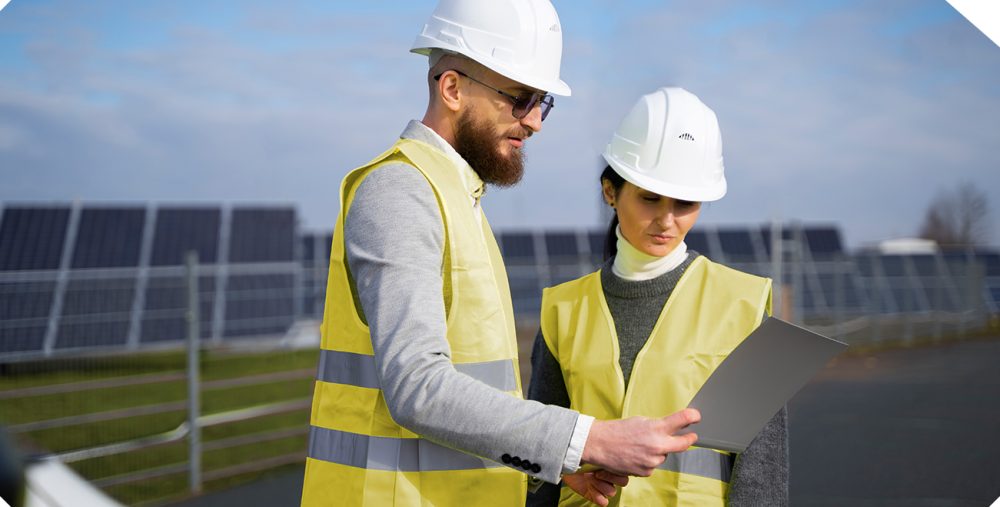
The Final Thought
Drone technology has caused a fundamental shift in conventional solar panel inspection practices to deliver superior outcomes in terms of safety, efficiency, and cost efficiency. With the progressing 2025, the inspection capabilities are expected to further enhance in line with the integration of advanced sensors, automated analysis systems, and AI.
The market has a diverse range of drone types, which present optimal solutions against varied solar installation requirements. Whether the requirement comes from small residential arrays or massive utility-scale farms, there are types of drones available in the market, fulfiling the needs.
Properly trained, certified professional drone operators are capable of maximising the technological advantages for you. They also ensure that the regulatory compliance is maintained. If you’re considering investment in drone-enabled solar panel inspection programs, it will be a strategic decision for you. It will present you some immediate operational advantages and position your organisation for future advancements in the fields of technology and renewable energy maintenance.
What types of drones are best suited for solar panel inspections?
Fixed wing drone platforms work are best suited for the inspection of large solar farms, whereas single rotor drone systems are considered to be ideal for complex installations that need precise maneuvering.
How long does a typical drone solar panel inspection take compared to manual methods?
Drone inspections can bring down the inspection time frames by more than 70%.
What are the qualifications required for drone operator jobs in solar inspections?
The Australian UAV regulations mandate Remote Pilot License certification and commercial operations approval. Specialised training in thermal imaging analysis is also necessary for drone jobs.
What are the common issues drones can detect on solar panels?
Drones are capable of detecting several solar panel issues, including thermal hot spots, overheating inverters, and shading from vegetation, besides common issues such as physical damage like cracks and loose connections, and dirt accumulation.
Can drones detect all types of solar panel defects effectively?
Modern types of UAVs can detect nearly 95% of the common solar panel issues like physical damage, electrical faults, and hot spots with the use of advanced thermal imaging technology.
